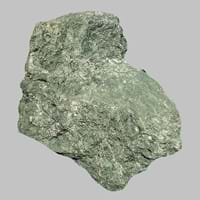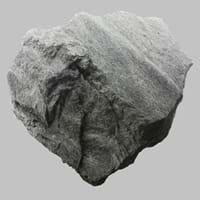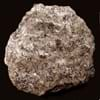Definition
A hydration and metamorphic transformation of ultramafic rock from the Earth's mantle is called as serpentinization, a group of minerals is formed by serpentinization compose rock 'serpentinite'.
Phyllite is a fine-grained metamorphic rock with a well-developed laminar structure, and is intermediate between slate and schist rocks
Discoverer
Unknown
Unknown
Etymology
From English word serpentinization.
From Greek phullon leaf + -ite1
Class
Metamorphic Rocks
Metamorphic Rocks
Sub-Class
Durable Rock, Medium Hardness Rock
Durable Rock, Soft Rock
Group
Not Applicable
Not Applicable
Other Categories
Fine Grained Rock, Opaque Rock
Coarse Grained Rock, Fine Grained Rock, Medium Grained Rock, Opaque Rock
Texture
Earthy
Phyllitic Sheen, Slaty
Color
Black, Brown, Colourless, Green, Grey, White
Black to Grey, Light Greenish Grey
Durability
Durable
Durable
Appearance
Rough and Dull
Crinkled or Wavy
Interior Uses
Decorative Aggregates, Interior Decoration
Decorative Aggregates, Floor Tiles, Homes, Interior Decoration
Exterior Uses
As Building Stone, Paving Stone, Garden Decoration, Office Buildings
As Building Stone, As Facing Stone, Garden Decoration
Other Architectural Uses
Curbing
Curbing
Construction Industry
As Dimension Stone, Cement Manufacture, for Road Aggregate, Making natural cement
As Dimension Stone, Building houses or walls, Cement Manufacture, Construction Aggregate, for Road Aggregate, Raw material for the manufacture of mortar, Roadstone
Medical Industry
Not Yet Used
Not Yet Used
Antiquity Uses
Artifacts, Jewellery, Monuments, Sculpture
Artifacts, Sculpture
Commercial Uses
Commemorative Tablets, Creating Artwork
Cemetery Markers, Commemorative Tablets, Creating Artwork, Writing Slates
Types
Jadeitite
Not Available
Features
Host Rock for Lead
Easily splits into thin plates, Is one of the oldest rock, Surfaces are often shiny
Archaeological Significance
Monuments
Used
Not Yet Used
Famous Monuments
Data Not Available
Not Applicable
Famous Sculptures
Data Not Available
Data Not Available
Formation
Due to change in environmental conditions, rocks are heated and pressurized deep inside the Earth's surface. Serpentinite is formed from the extreme heat caused by magma or by the intense collisions and friction of tectonic plates.
Phyllite is a metamorphic rock which is formed by regional metamorphism of argillaceous sediments since their cleavage arose due to deviatoric stress.
Mineral Content
Carbonate, Magnetite, Pyrrhotite, Serpentine, Sulfides
Albite, Alusite, Amphibole, Apatite, Biotite, Chlorite, Epidote, Feldspar, Garnet, Graphite, Hornblade, Kyanite, Micas, Muscovite or Illite, Porphyroblasts, Quartz, Sillimanite, Staurolite, Talc, Zircon
Compound Content
Ca, CaO, Carbon Dioxide, KCl, MgO, Sulfur Dioxide, Sulphur
CaO, Carbon Dioxide, MgO
Types of Metamorphism
Burial Metamorphism, Cataclastic Metamorphism, Contact Metamorphism, Hydrothermal Metamorphism, Impact Metamorphism
Not Applicable
Types of Weathering
Not Applicable
Biological Weathering, Chemical Weathering, Mechanical Weathering
Types of Erosion
Chemical Erosion, Coastal Erosion, Glacier Erosion, Sea Erosion, Wind Erosion
Chemical Erosion, Coastal Erosion, Glacier Erosion, Water Erosion, Wind Erosion
Grain Size
Very fine-grained
Medium to Fine Coarse Grained
Fracture
Uneven
Conchoidal
Streak
White, Greenish White or Grey
White
Porosity
Less Porous
Highly Porous
Luster
Waxy and Dull
Phyllitic
Compressive Strength
Not Available
Cleavage
Irregular
Crenulation and Pervasive
Specific Gravity
2.79-3
2.72-2.73
Transparency
Opaque
Opaque
Density
2.5-3 g/cm3
2.18-3.3 g/cm3
Specific Heat Capacity
Not Available
Resistance
Heat Resistant
Heat Resistant, Pressure Resistant, Water Resistant
Deposits in Eastern Continents
Asia
India, Saudi Arabia, Singapore, South Korea
Afghanistan, Bangladesh, Bhutan, China, India, Japan, Kazakhstan, Malaysia, Pakistan, Russia, Thailand, Turkey, Vietnam
Africa
Ethiopia, Western Africa
Egypt, Ethiopia, Morocco, Nigeria, South Africa
Europe
England, Georgia, Switzerland, United Kingdom
Austria, England, France, Georgia, Germany, Italy, Liechtenstein, Monaco, Norway, Slovenia, Spain, Sweden, Switzerland
Others
Not Yet Found
Not Yet Found
Deposits in Western Continents
North America
Canada
Canada, Costa Rica, Cuba, Mexico, Panama, USA
South America
Colombia
Brazil, Colombia, Guyana
Deposits in Oceania Continent
Australia
Central Australia, New South Wales, New Zealand, Western Australia
New South Wales, New Zealand, Queensland
Serpentinite vs Phyllite Characteristics
Though some rocks look identical, they have certain characteristics which distinguish them from others. Characteristics of rocks include texture, appearance, color, fracture, streak, hardness etc. Serpentinite vs Phyllite characteristics assist us to distinguish and recognize rocks. Also you can check about Properties of Serpentinite and Properties of Phyllite. Learn more about Serpentinite vs Phyllite in the next section. The interior uses of Serpentinite include Decorative aggregates and Interior decoration whereas the interior uses of Phyllite include Decorative aggregates, Floor tiles, Homes and Interior decoration. Due to some exceptional properties of Serpentinite and Phyllite, they have various applications in construction industry. The uses of Serpentinite in construction industry include As dimension stone, Cement manufacture, For road aggregate, Making natural cement and that of Phyllite include As dimension stone, Building houses or walls, Cement manufacture, Construction aggregate, For road aggregate, Raw material for the manufacture of mortar, Roadstone.
More about Serpentinite and Phyllite
Here you can know more about Serpentinite and Phyllite. The life cycle of a rock consists of formation of rock, composition of rock and transformation of rock. The composition of Serpentinite and Phyllite consists of mineral content and compound content. The mineral content of Serpentinite includes Carbonate, Magnetite, Pyrrhotite, Serpentine, Sulfides and mineral content of Phyllite includes Albite, Alusite, Amphibole, Apatite, Biotite, Chlorite, Epidote, Feldspar, Garnet, Graphite, Hornblade, Kyanite, Micas, Muscovite or Illite, Porphyroblasts, Quartz, Sillimanite, Staurolite, Talc, Zircon. You can also check out the list of all . When we have to compare Serpentinite vs Phyllite, the texture, color and appearance plays an important role in determining the type of rock. Serpentinite is available in black, brown, colourless, green, grey, white colors whereas, Phyllite is available in black to grey, light greenish grey colors. Appearance of Serpentinite is Rough and Dull and that of Phyllite is Crinkled or Wavy. Properties of rock is another aspect for Serpentinite vs Phyllite. The hardness of Serpentinite is 3-5 and that of Phyllite is 1-2. The types of Serpentinite are Jadeitite whereas types of Phyllite are Not Available. Streak of rock is the color of powder produced when it is dragged across an unweathered surface. The streak of Serpentinite and Phyllite is white, greenish white or grey. The specific heat capacity of Serpentinite is 0.95 kJ/Kg K and that of Phyllite is Not Available. Depending on the properties like hardness, toughness, specific heat capacity, porosity etc., rocks are resistant to heat, wear, impact, etc.Serpentinite is heat resistant whereas Phyllite is heat resistant, pressure resistant, water resistant.





